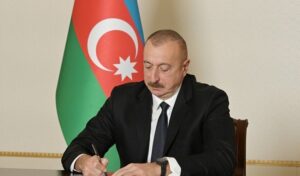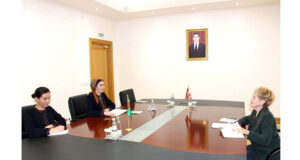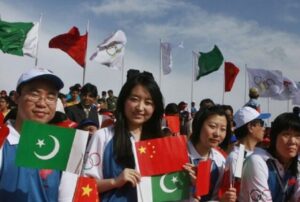Rebuilding the Future Together: Azerbaijan and Turkmenistan Strengthen Regional Alliance

The visit to the Republic of Azerbaijan by Gurbanguly Berdimuhamedov, Chairman of the People Council of Turkmenistan, hosted by the President Ilham Aliyev was an official visit but one which actually symbolized much more than official diplomacy. This high level contact created a focus on shared vision of peaceful coexistence and shared development of the region as well as the preservation of their culture and thus is a part of the larger directions in Turkic cooperation and the transformation of the South Caucasus following the recent conflict.
The historical and cultural roots of the Azerbaijan-Turkmenistan relations are strong and lie in the common roots of Turkic people, language closeness, and century-old interdependence. Ever since having appeared as individual statehoods after the breakup of the Soviet Union, the two countries experienced a gradual development of ties with each other in various fields such as energy, logistics, education, and humanitarian projects, etc.
The recent trip of the Chairman Berdimuhamedov to Azerbaijan is an indicator that Gurbanguly wants not only a revalidation of these historic relationships but he wants to diversify and strengthen them in accordance with changing geopolitical realities. As a strategic linkage to worldwide trading and energy, the Caspian region promises the two nations of Azerbaijan and Turkmenistan to become key players to determine the economic destiny of Eurasia. This visit, thus, was a diplomatic activity rather than a statement of interest to engage more in defining connectivity and security in the region.
Likewise, the leaders paying a joint visit to the liberated lands in Garabagh with one of the focuses of their tour being on such historically rich cities as Fuzuli and Shusha served as one of the most indicative episodes of the visit. This part of the journey had its symbolic significance of enormous character. It made highlighted Azerbaijan post-conflict recovery initiative and placed the nation on the pedestal of revival and reconstruction after long occupation and war.
The visit by the Chairman Berdimuhamedov in these cities was a clear indication of the support of reaffirmation of the territorial integrity and reconstruction agenda by Turkmenistan to the reaffirmation agenda by Azerbaijan. It was also shown to remain consistent with values of peace, cultural preservation, and cooperation in the region as it relates to international standards.
Fuzuli and Shusha, which in the past have been ruined by colonial rule, are being thoroughly and grandiose restructured under Azerbaijan. In the course of the visit, President Aliyev elaborated a comprehensive picture of master plans informing the transformation of these cities. Fuzuli as an intelligent and green city with a projected population of 50,000, by 2040, is becoming a significant transport and logistics hub of the Garabagh and Eastern Zangazur economic zones.
The approach to reconstruction involves green infrastructure, smart city technologies, and reconstruction of the main social avenues, including hospitals, educational establishments, museums, memorial complexes. Such attempts do not only focus on the renovation of the infrastructure, but they also concentrate on the psychological and cultural trauma of displacement and removal.
In the case of Turkmenistan, the country that has a neutrality principle and pays a lot of attention to the development and peace, the current reconstruction creates a possibility of bilateral cooperation. The visit paves the pathway to increased Turkmen participation in the recovery of Azerbaijan regardless of whether it takes place via technical proficiency, cultural contacts, or energy membership.
The symbolism of the trip was additionally emphasized by the fact that the tour in Shusha, which is one of the cultural and spiritual centers of the Azerbaijan region. The leaders got a tour of newly rebuilt residential complexes and important religious places, with the Yukhari Govhar Agha Mosque and the progressing New Shusha Mosque included. Being architecturally and symbolically valuable, these sites are the reflection of the attempts of Azerbaijan to revive the physical state of the city, along with its spiritual and cultural image.
The example of Azerbaijan includes the revival of historical places, as the Mehmandarovs-Estate Complex, which is going to be a museum soon, is a form of cultural diplomacy. These projects serve to exhibit the pre-Soviet intellectual and aristocratic heritage along with claiming cultural identity of the country today. Turkmenistan as a country already inclined to maintaining the heritage in the face of modernization sees in these attempts a reflection of similar concerns.
In addition to cultural symbolism, visit has greater geopolitical connotations. It reinforces the discourse of Turkic unity which has gained more momentum within the context of the various organizations like the Organization of Turkic States. The way of Azerbaijan-Turkmenistan relationship is shifting and turning into less bilateral dimension and more multilateral approach about regional cooperation.
Here the visit can be seen as a forerunner of what may turn out to be more institutionalized forms of cooperation. Joint economic development, organized infrastructure development, school exchange, and technological improvement may be next. The involvement of Turkmenistan in trans-Caspian transport and energy corridors is only a possibility as long as Ashgabat recently refreshes an active approach to regional connectivity initiatives the link between Central Asia and the South Caucasus, and beyond.
The presence of Chairman Berdimuhamedov at such a critical point of the post-war development history of Azerbaijan impressed an idea of trust, mutual respect, support, and strategic compliance. It strengthened the image of local future characterized by harmony and peaceful growth and common prosperity.
In actual sense, this visit was not a routine engagement. It was diplomacy with a bang- a diplomacy rife with historic contexts and cultural affirms and modern-day intentions. Involving such a neighbor in such a significant and symbolic way, Azerbaijan made it obvious that they wanted to take regional leadership and be committed to creating a future based on peace, development, and unity.
As the South Caucasus prepares to ride in a new era, this bi-lateral engagement between Azerbaijan and Turkmenistan provides a reference guideline on what regional relations can be accomplished by being true to each other, acting out of common interest, and considering oneself into the future.


